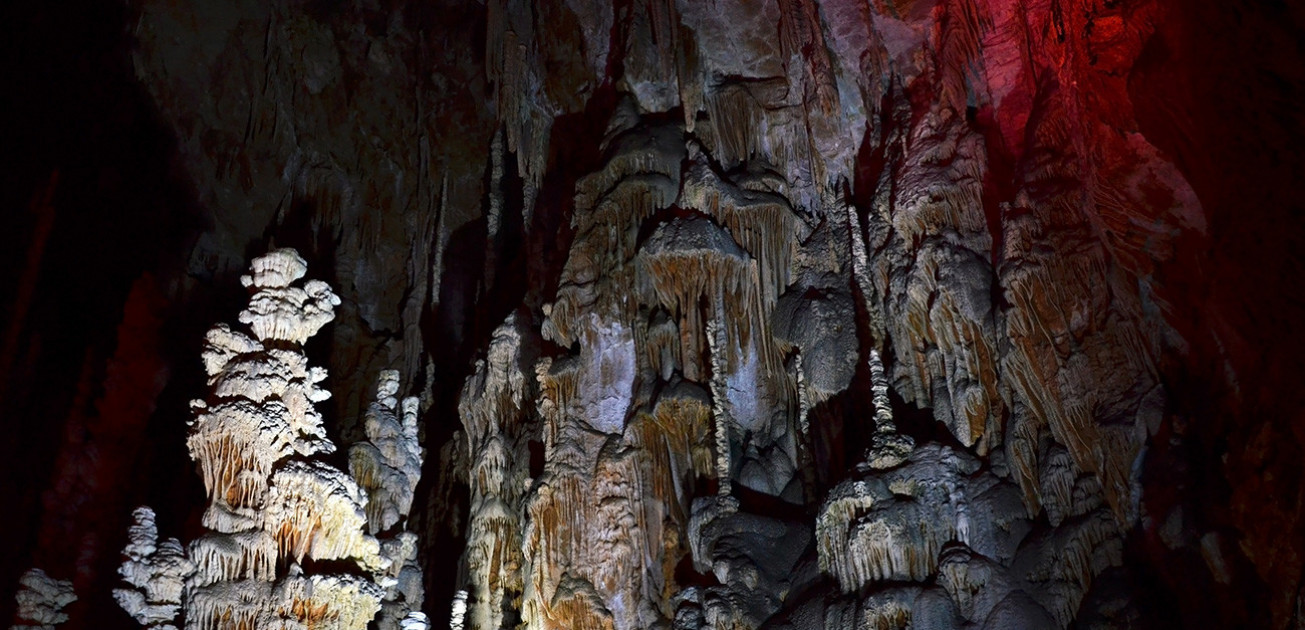


"Our world’s caves are places of wonder, mystery and majestic beauty. Show caves around the world are embracing their role in protecting and preserving caves and providing a place for people to learn about these special, natural, cultural and historical resources.
Show caves also play another important nature tourism role of sustainable economic development, providing jobs, and helping the economy of their regions.”
Tapolcai Tavasbarlang was discovered by the baker Pál Tóth and the bricklayer Ferenc Németh, who helped him build a new house. They were digging the well, and the hard rock made it necessary to blast. After some time they found a small hole, which caved in and opened the cavern. They organized lamps, and some men went into the cave and discovered a passage with a series of ponds, separated by rimstones. When the men came back and told the story of their discovery, a second, more scientific exploration started, lead by the principal Gusztáv Rédli. He reported to Lajos Lóczy, a local scientist.
The most obvious, and also absolutely unique thing about this cave is the temperature. Air and water in the cave are much warmer than in other caves of the area. The reason for this high temperature is of course volcanic action. At the end of the Tertiary period, tectonic movment created clefts which were used by ascending lava. The lava flows formed flat streams, basaltic plains which were weathered since then and only small remains of them are left today: the typical basaltic hills of this area. They are called witness hills as they witness the time of the lava flows. The name of the town Tapolca is derived from the word toplica which means hot water.
The Sarmatian limstone in which the cave formed is very young. It was deposited during the mid-Miocene in the late Tertiary, about 13.7 million years ago. At this time, before the Alps were formed, this area was covered by the shallow Sarmatian Sea. The depostits are thin limestone layers changing with marl layers. Below are huge layers of 210-130 million year-old Upper-Triassic dolomite, which is also karstified. This rock goes down several hundred meters and gives way to the groundwater which is heated by post-volcanic activity to approximately 40°C. It mixes with cold surface water which results is a water temperature of about 18 to 20°C.
As the descent through the unfinished well was rather difficult, a so called Cave Company was founded to develop the cave. Under the supervision of Aladár Keszler an entrance staircaise with 74 steps from the surface into the cave was built. This entrance is still in use today.
The main modification of the cave was undertaken in 1938, when the rimstones of the cave pools were destroyed to allow a boat trip through the cave. A 25m long artificial tunnel was also built, to allow a round trip. The water of the Tapolca creek was dammed outside the cave to raise the water level inside the cave.
The special warm and humid conditions in the cave, and the typical factors of speleotherapy (clean air and high carbon dioxide content) make this cave very beneficial for people with asthmatic and respiratory diseases. It is used for speleotherapy by various nearby baths. Inside the cave it is possible to swimm through several passages, which are partly natural, bpartly artificial tunnels. There are small pools and jakuzzis, and a large outdoor pool.






Address: Tapolcai Tavasbarlang, H-8300 Tapolca, Kisfaludy Sándor u. 3
Town / City: Tapolca
Country: Hungary
Email:knauer@bfnp.kvvm.hu
Phone: +36-87-412-579
Fax: +36-87-412-813
Latitude: 46.8831443787
Longitude: 17.4431953430
Name: Lake Cave of Tapolca
Name original: Tapolcai Tavasbarlang
ISCA member: Ministry for Rural Development, Speleological Department
Length: 0 m
Depth: 0 m
Elevation of entrance: 0 m
Number of visitors: 0 / per year
Length of show path: m
Duration of visit: min